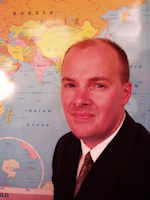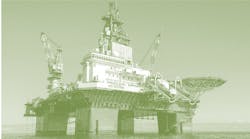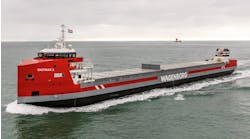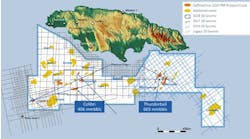View Article as Single page
Offshore: What recommendations do you have for someone just out of college who may be interested in this industry?
Norton: They need to get the experience of working on a rig; get a feel for what the equipment is, what it looks like, what it does. I would suggest that they try to work a year or two in the field, and gain that experience. Do the grunt work. Don't expect to be a manager right off the bat. Learn from the bottom up. Learn the ins and outs, and learn what works, and what doesn't work. That way you've built up a mental library and can say, "Hey, we did this 25 years ago and it worked or didn't work …" or "we tried it and it was a failure …" That would be my suggestion.
Offshore: How has the safety culture changed over the years?
Norton: On the earlier rigs, most things were done manually, and most of accidents occurred either on the drill floor or in the derrick or on the pipe rack. You had to move the pipe and casing from the pipe rack to the floor, up the pipe slide. It was all done with chains and tuggers, and you had guys pushing pipe around, moving it into the mouse hole. You've seen pictures of the guys throwing the chains and pushing the tongs in, and then torquing up the joints. This was where a lot of fingers were lost, and a lot of toes were lost from pipe dropping on them. Guys got hurt, but it was an accepted way of life. But now the culture has changed to where you have virtually no people on the floor. Everything is automated. The crane operator puts the pipe in the catwalk machine, and it delivers it to the floor. The various devices that they have now can build the stands and set the stands back into the setback area. When they are ready for another stand, the handling system in the derrick will move the pipe and stab it. The iron roughneck makes up the joint, dopes the joint, spins it up, torques it. Drilling is all controlled by the driller and assistant driller in the cabin. So there are very few people on the floor where the accidents used to occur.
Offshore: Going forward, where do you see industry improvements happening?
Norton: With a lot of equipment working simultaneously, anti-collision devices need to be in place and working. The people operating the equipment have to be able to know when it's not operating properly and have either some way of shutting it down or bringing it to a safe condition. They need to know how to operate it if the computer goes down. All of this equipment is computer-controlled now, with PLCs and such. If it goes down, the rig shuts down until a technician can get there to find out what the problem is. So I think that's going to be the next big challenge – making certain there's sufficient redundancy and that it can operate so that the rig doesn't stop drilling. The operator will only allow a certain amount of down time, then the rig goes off payroll.
Offshore: Are there water depths that are not feasible?
Norton: As long as operators have finds of sufficient commercial value, they will find a way to extract the oil or the gas from those formations. There's been talk about these submersibles… these fully submerged drilling rigs and such. Some company is going to figure out how to do it.
Offshore: Looking back over your career, were there any "wow" moments?
Norton: Every new project always brings in something, such as a new piece of equipment or a new process, or something that wasn't available two years ago. So it's been just a continual wowing, so to speak. There's always something new to make performing the various tasks better, faster, or safer. Doing things faster is the name of the game, because the operator is always pushing for the drilling contractor to drill the most hole in the least amount of time.



